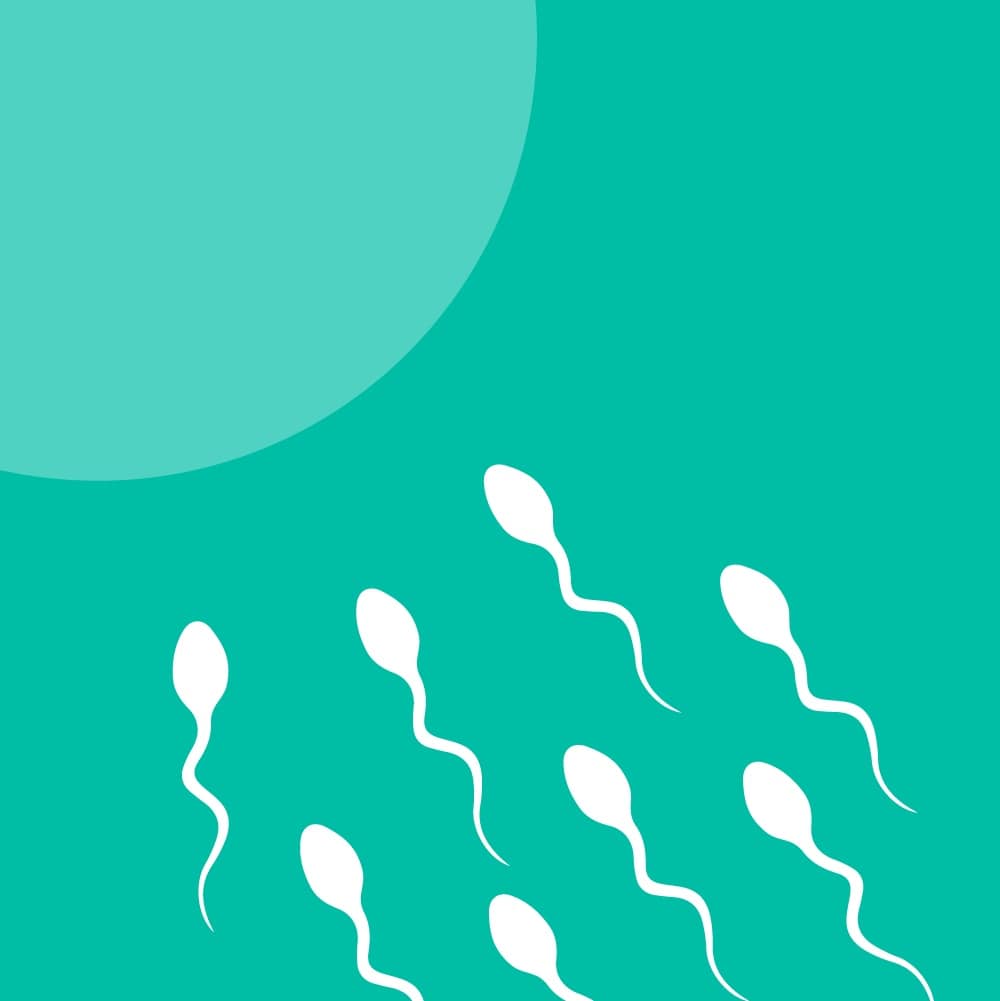If you just started the conversation with your healthcare provider about family planning, you have possibly been told to start tracking your cycles and fertile window, change your diet, and maybe take supplements. Often, the main focus is on women’s wellness without giving proper attention and consideration to the male partner’s reproductive health. This article will analyze the ‘infertility’ aspect from both the male and female perspectives.
In our previous blog posts, we discussed the concept of “primary” or “secondary” infertility and how kegg users that have suffered from both, successfully conceived with kegg. Fifty percent of our kegg users who are currently trying to conceive are seeking their first baby while the other half trying to conceive already have at least one child. Our mission is to be a source of support for all keggsters, regardless of where they are on their fertility journeys.
According to the US Department of Health and Human Services, in one-third of infertile couples, the complication is with the man.
Another one-third of infertile couples issues stem from problems with the woman, and in the final one-third of infertile couples, the issue is unidentified or is both the man and woman.1

Studies show that male fertility has declined by as much as 50% in the last 40 years. In 1973 the average sperm count was around 99 Million/mL. In 2011 the number reported at only 47 Million/mL. If the trend continues, many men could be infertile by the year 2060 and this is something worth paying attention to. Fortunately, this is not something to be completely fearful for. Male infertility can be prevented through lifestyle changes and healthy sexual wellness awareness.2
What is infertility:
Infertility is normally defined as the inability to get pregnant after 1 year of unprotected sex. After this point, most experts recommend seeking help from a fertility specialist. A common misconception is that women are the main reason for infertility in a couple. However, it is good to know that both men and women contribute to infertility.
Causes for female infertility:
Women need functioning ovaries, fallopian tubes, and uterus (which includes the cervix) in order to get pregnant without fertility treatments. If there are any health conditions that affect any of the listed organs, this could contribute to the inability to become pregnant.
Nevertheless, the most common reason for female infertility is caused by issues with ovulation. Ovulation occurs when an egg is released from the ovary into the fallopian tube. Without ovulation, it is not possible for an egg to get fertilized.
Causes for male infertility:
The most common issue that leads to infertility in men is related to the testicles. This could look like hormone imbalances, blockages, or an absence in ducts of the male reproductive organs. Other problems for male infertility include the formation of sperm in the testicles. Some common health conditions that can affect this include:
- Defects in the chromosome
- Diabetes
- Hyperprolactinemia
- Injury to the testicle
- Insensitivity to the hormone androgen
- Swelling of the testes from sexually transmitted infections
- Thyroid problems
The cycle of producing sperm takes 2-3 months.3 During this time, many environmental/external and lifestyle factors can impact sperm production. Men have the power to take actions and make this impact, a positive one.
From more a lifestyle point of view:
- Avoid drug and tobacco use
- Avoid high temperatures found in places like hot tubs, hot baths, and saunas
- Avoid exposure to industrial or environmental toxins
- Regular exercise can help maintain sperm quality and increase the chances for achieving a pregnancy
- Some medications and supplements may impact fertility. Talk with your doctor about any supplements and medications including prescriptions and non-prescriptions you take regularly. Do not stop taking prescription medications without first consulting with your Doctor.
What a Semen Analysis Measures:
A conventional semen analysis looks at three standard measures:
- Sperm Count (concentration): the number of sperm per unit of volume of semen
- Motility: the sperm’s ability to swim properly toward the egg
- Morphology: the percent of sperm that have a normal shape and an overall appearance.

It is important to keep in mind that a normal sperm count does not indicate whether or not you are fertile as sperm count is only one factor in assessing male fertility. One of the most important factors in achieving a pregnancy is the number of motile sperm in the sample. If the sperm cannot swim to the egg, natural pregnancy is not possible.
This is why we recommend at-home sperm tests that measure count and motility, meaning the sperm can get to where they need to go (the egg).
You can take a home sperm test to motile sperm concentration. This will provide you with the number of swimming sperm in semen. Fortunately, a home sperm test can offer results in just a few minutes. This type of sperm test works by identifying a protein that is only found in sperm.
When a home sperm test shows that your concentration is low or negative, you will want to consult your doctor for further evaluation. When the sperm test comes back positive, this means that your sperm concentration is considered normal.
On the occasion of NIAW, we partnered with the YO Sperm team in order to help you look at infertility from a couple’s perspective.
YO is the first FDA-approved home sperm test that allows men and their partners to reliably screen sperm count and motility (moving sperm concentration) in the privacy of their own home.
Use the code KEGG10 at checkout for 10% off!






